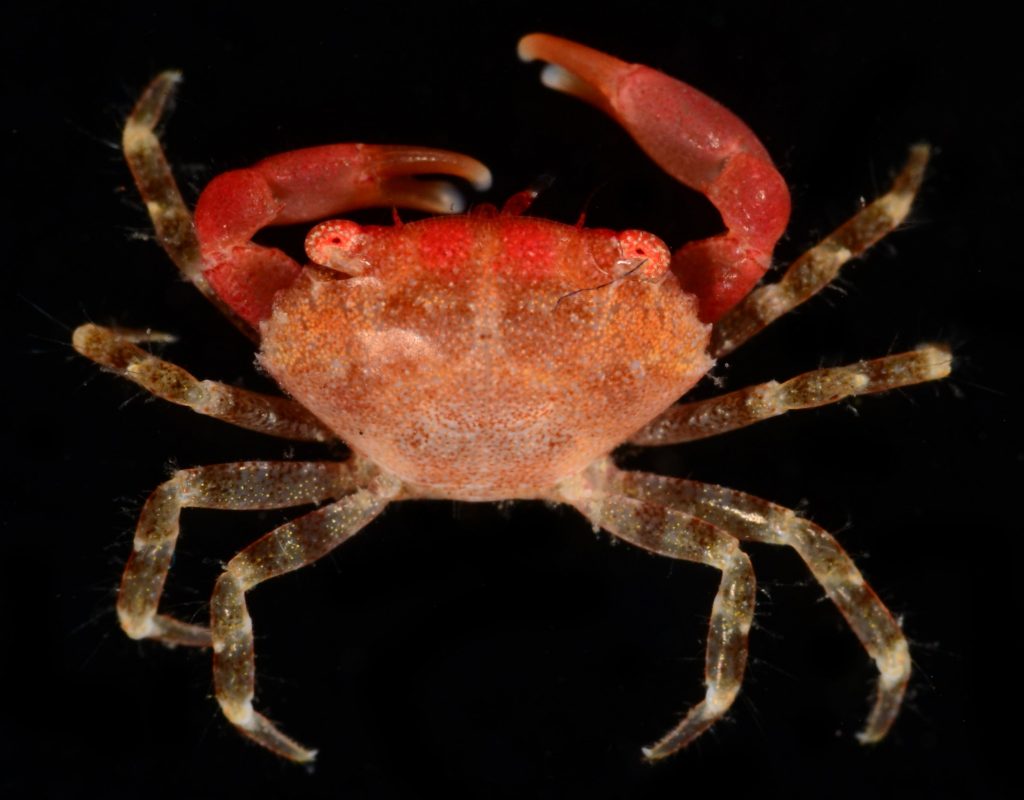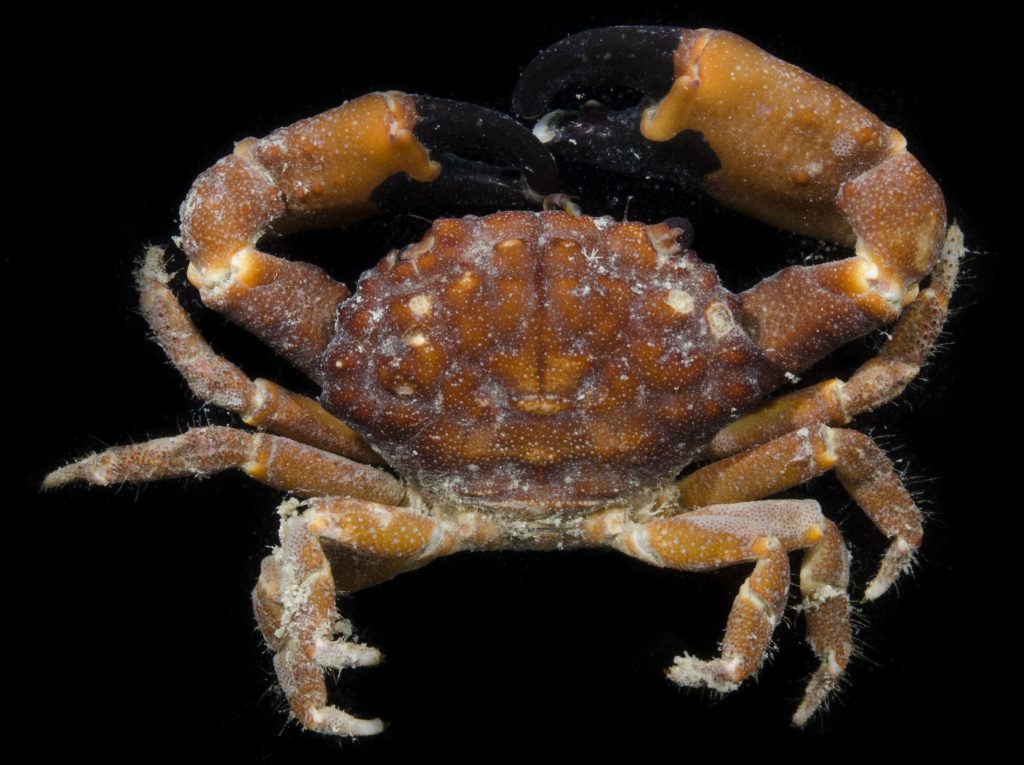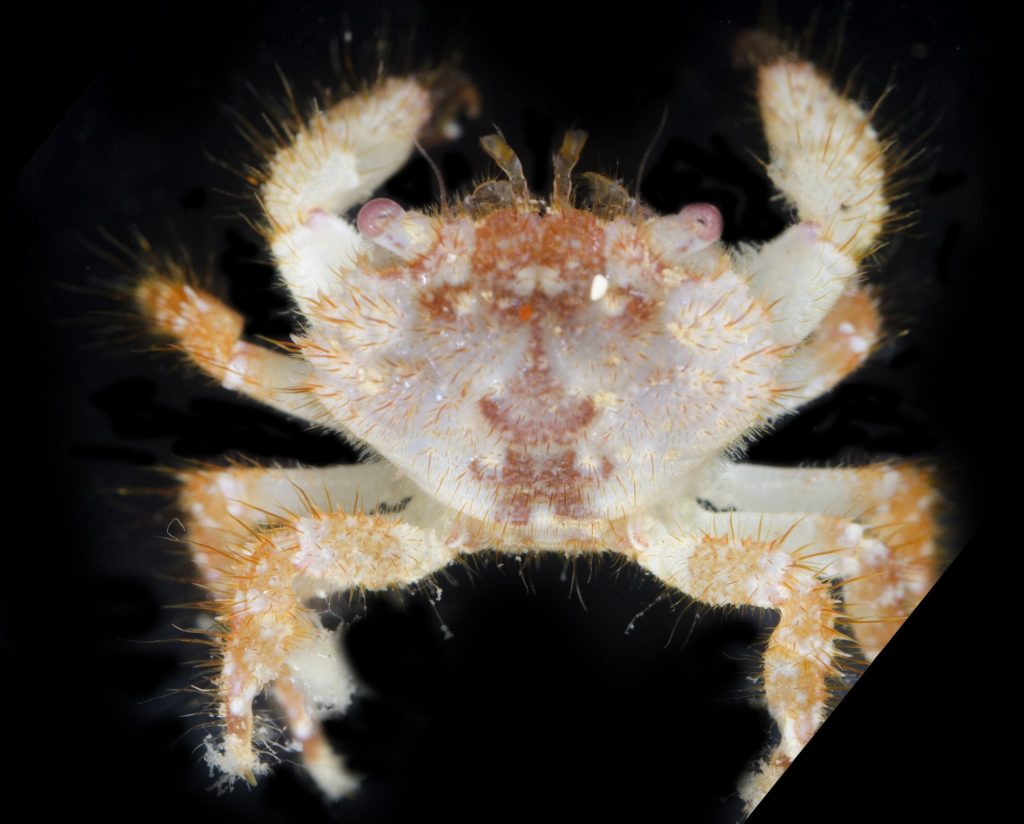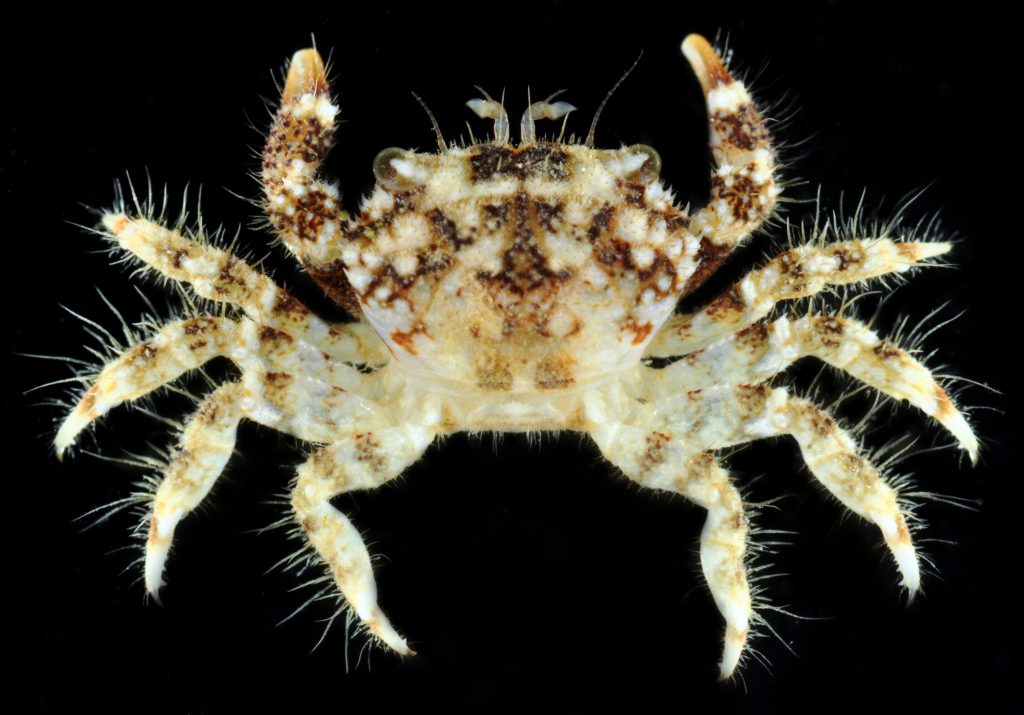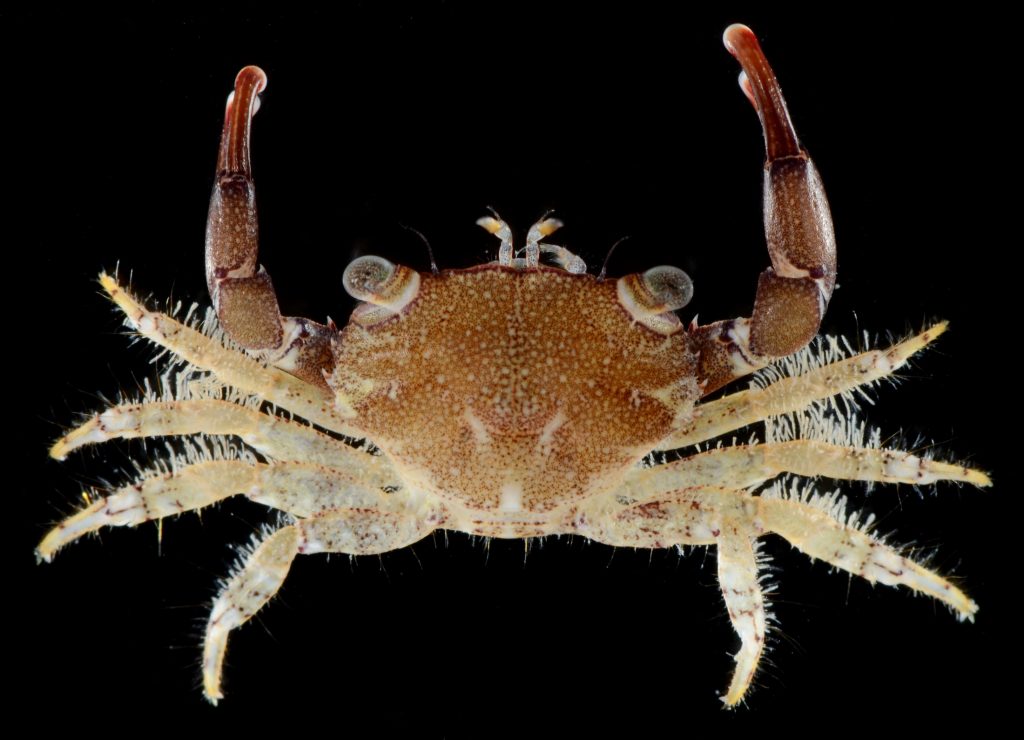The Indo-West Pacific is the largest, most biodiverse marine ecosystem on Earth, and many of the species it supports have comparably wide ranges. Writing in “The Origin of Species,” Charles Darwin noted that “… many fish range from the Pacific into the Indian Ocean, and many shells are common to the eastern islands of the Pacific and the eastern shores of Africa, on almost exactly opposite meridians of latitude.”
At first glance, the same pattern appears to be true for crabs. Chlorodielline crabs, common on coral reefs, look so similar that scientists have struggled to distinguish species in the group based solely on appearance. But a new study reveals a surprising exception to the rule of uniformity across the Indo-West Pacific. While chlorodielline crab species with non-overlapping ranges are often nearly identical, those that occupy the same region have a unique feature.
“They all look the same, until you compare their gonopods, which are structurally complex and very species specific,” said lead author and former Florida Museum of Natural History postdoctoral researcher Robert Lasley.
Gonopods are specialized appendages used for reproduction that have evolved multiple times in different arthropod groups, including crustaceans, moths and butterflies, and millipedes. They’re variously used for sperm transfer and clasping, and in crabs, they sometimes come equipped with elaborate frills that give them the appearance of a spatula with a mohawk.
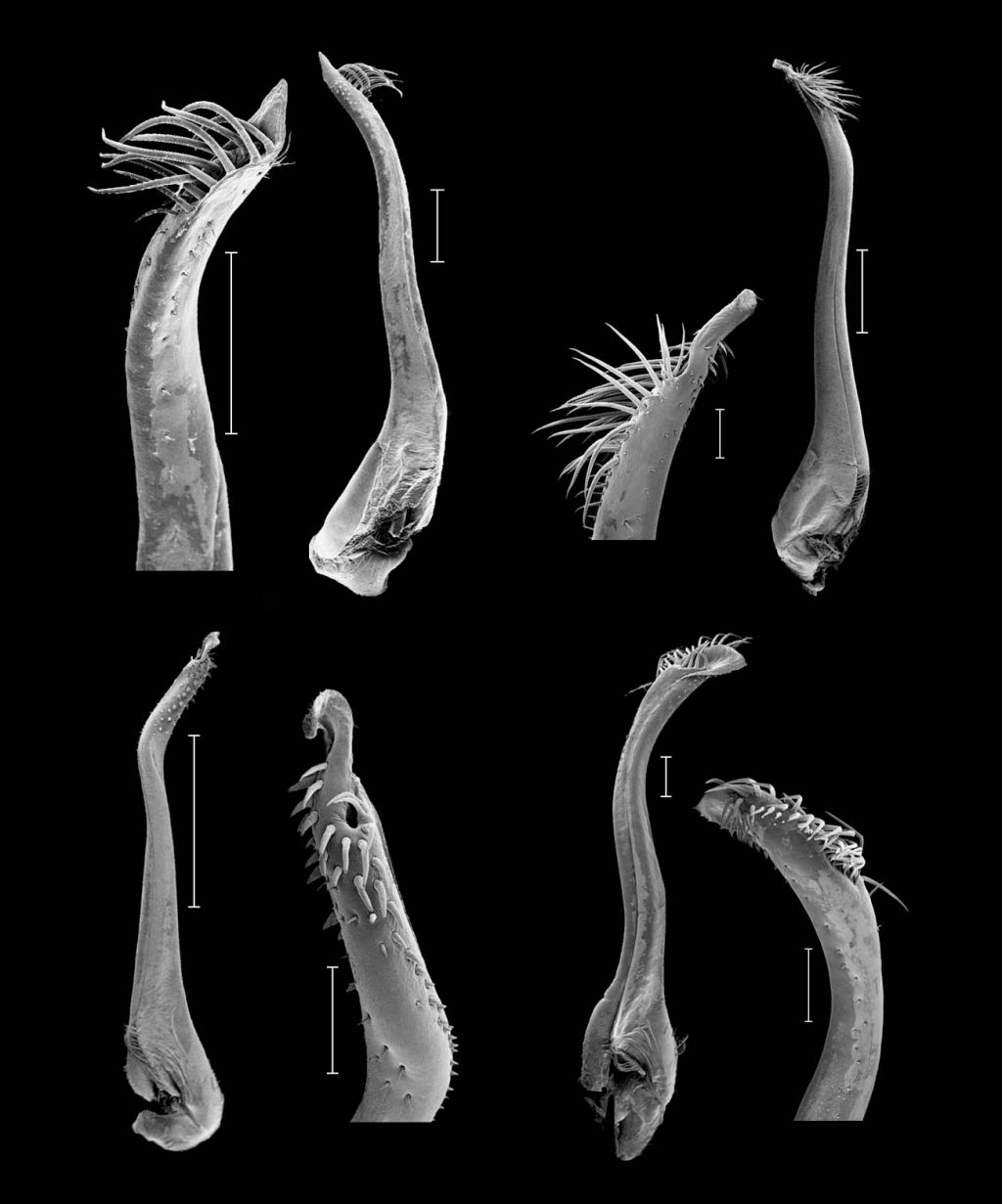
Images by Robert Lasley
Lasley, who is currently the curator of Crustacea at the University of Guam’s Biorepository, wanted to see if there was any pattern to the seemingly endless, undirected variation in their gonopods. To do that, he needed a close look at species across the Indo-West Pacific and assiduously collected specimens for more than a decade. He participated in numerous marine field forays in the Red Sea, Singapore, Australia, and the Phoenix Islands, hovering inches above their reefscapes in search of crabs hiding among the coral bric-a-brac.
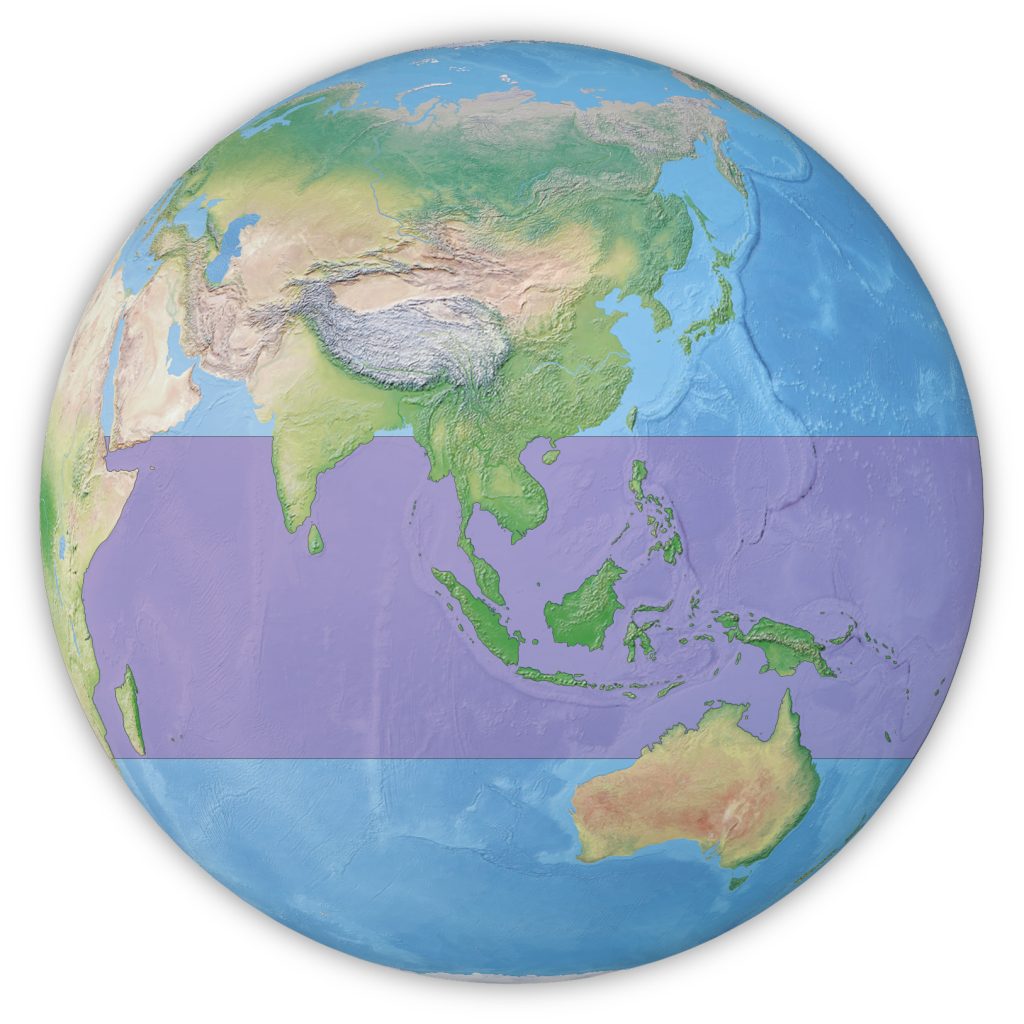
PowerGlobe by One Stop Map, CC-BY
Chlorodielline crabs are especially diverse in what’s known as the coral triangle, where open sea is punctuated by a vast archipelago that stretches from Indonesia to the Solomon Islands. The shallow waters around these islands support roughly 76% of the world’s coral species and more than a quarter of all coral reef fishes. Chlorodielline crabs, most of which grow no larger than a corn kernel, sit near the base of the food chain in these ecosystems.
“They’re among the most abundant coral reef crustaceans, which makes them very important,” Lasley said. “They live in what are essentially apartment buildings made out of dead coral, and there are so many of them that any time you pick up a piece of reef rubble, they spill out.”
Before Lasley could determine why they had such wildly different gonopods, he first had to figure out how chlorodielline species are related to each other, which he accomplished through an analysis of DNA extracted from museum specimens. The authors then added information regarding the range of each species and the shape of their gonopods.
What they found led them to one of marine biology’s most perplexing mysteries. There are a few key ingredients natural selection needs to make new species, but two of the most crucial are genetic variation and isolation. On land, roaming animals become isolated all the time, but in marine environments, this step in the speciation process can be harder to achieve. Many marine invertebrates — including crabs — have a larval stage, in which individuals drift across the world’s oceans in the form of microscopic plankton. With their strong capacity for long-distance dispersal, how do they remain isolated long enough for evolution to generate diversity?
Naturalists like Darwin saw the Indo West Pacific as one vast body of water, uninterrupted by geographic barriers, like ocean rifts or unproductive dead zones, that would otherwise act like a catalyst in the process of speciation.
The results of this study suggest sheer distance and time can also act as barriers. Many chlorodielline crabs have ranges that extend across the entirety of the Indo-West Pacific. The genetic analysis revealed these cryptic species have slowly accumulated differences in their DNA over millions of years.
But it wasn’t until close relatives were reunited after an extended separation that those genetic differences visibly manifested in a single, peculiar way. In almost every case, close relatives with overlapping ranges had uniquely shaped gonopods but otherwise looked exactly the same.
“What we can say is these crabs start genetically diverging in different geographic areas, and then the divergence of gonopods is an important piece of the speciation process that happens at the tail end of things,” he said.
Lasley isn’t sure why these gonopods only begin to change when two species are in close proximity, but he suspects it’s something inherent in the way these crabs reproduce, which he intends to test in future studies. For now, the results indicate that far more variation exists at the heart of Earth’s most species-rich marine ecosystem than previously suspected, and the engine driving its diversity has yet to be entirely discovered.
Additional authors of the study include Nathaniel Evans of the University of the Ryukyus, Gustav Paulay and Francois Michonneau of the Florida Museum of Natural History, Amanda Windsor of the National Museum of Natural History, Irwansyah of Sylah Kuala University, and Peter Ng of the Lee Kong Chian Natural History Museum.
Funding for the study was provided in part by the National Science Foundation (grants DEB 1856245 and GECCO 1457769), the Gordon and Betty Moore Foundation, the Alfred P. Sloan Foundation and the Japan Society for the Promotion of Science (P22078).
Source: Robert Lasley, rlasleyjr@gmail.com
Media contact: Jerald Pinson, jpinson@flmnh.ufl.edu, 352-294-0452
